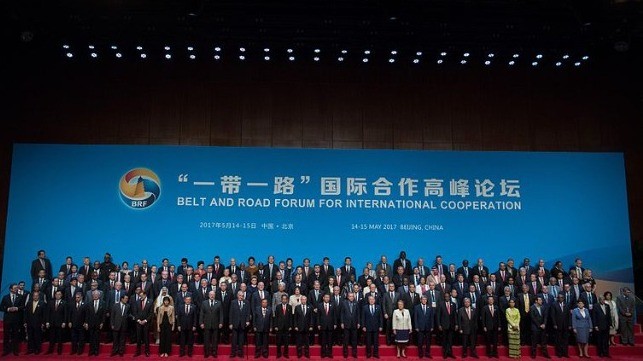
Western nations have been critical of China’s outpouring of development capital in Africa under its Belt and Road Initiative (BRI), and have even urged African governments to avoid Chinese financing. With huge infrastructural investment gaps to cover, it has been imperative for Africa to seek a lenient development partner for its projects. Additionally, most African leaders – especially those with a history of corruption – normally shun the West’s Bretton Woods institutions (the World Bank and IMF), which tend to demand high accountability on their loan facilities.
From mega-port investments in Kenya to profitable fish meal factories on the West African coastline, half of the 100-plus countries that are recipients of BRI investment are located in Africa. Indeed, the BRI’s flexible terms are a unique and an attractive proposition for the African politicians.
BRI has placed China on a competing trajectory in the geopolitical scene against other global super-powers. However, can Western nations combine their efforts to rival the BRI?
In March, President Biden told reporters that during a phone call with UK Prime Minister Boris Johnson, they mulled over an alternative infrastructure scheme that could essentially compete with China’s BRI. “I suggested we should have, essentially, a similar initiative, pulling from the democratic states, helping those communities around the world that, in fact, need help,” Biden told reporters. Further, Biden has been seeking to encourage private-sector investment in overseas projects that could rival those of BRI.
Biden’s administration seems determined to go big on infrastructure investment following the launch of a multi-trillion infrastructure and jobs package last month. He called it “the moment that America won the future again,” as the U.S will increase financing in promising new technologies such as quantum computing, artificial intelligence and biotechnology.
President Biden has also been quoted vowing that he would prevent China from surpassing the U.S to become the most powerful nation in the world. He clarified that United States was not looking for a confrontation, but implored China to adhere to rules of international trade, fair competition and respect for human rights.
To determine the amount of effort that President Biden has to put in to slow China’s increasing investment influence, we have to analyze what BRI has achieved since its launch in 2013.
So far, over 100 countries have signed to the BRI infrastructure projects. Recent estimates by Refinitiv database shows that over 2600 projects at a total cost of $3.7 trillion can be linked to the BRI as of mid-last year. However, it is important to note that some countries under BRI have heeded criticism of the projects, as they are seen to be costly and redundant. In addition, COVID-19 has also affected about 20 percent of the projects.
Will Biden be in a position to pull a plug to this during his term? Maybe it’s be too early to tell. Or maybe, the BRI alternative will emerge from a partnership between EU and India. Last month, the Financial Times reported that EU and India are in talks to build a joint infrastructure projects around the world in a “connectivity” partnership. It includes sectors such as energy, digital and transport, with better legal safeguards and attractive loan terms when compared to those offered by Beijing. The partnership will offer alternatives to the BRI in Europe, Asia and Africa, as well as aim to set financial sustainability standards and rule of law benchmarks.
There is speculation already that the upcoming G7 summit to be hosted by UK Prime Minister Boris Johnson will feature an infrastructure investment agenda in light of the BRI. India, Australia and South Korea have been invited to attend this year’s summit.
But some foreign policy analysts have questioned the intentions of the West’s initiative. “Is it just to blunt China’s growing power or there is a genuine intention to invest in LMICs (low- and middle-income countries)?” posed Gyude Moore, a senior policy fellow at the Center for Global Development.
Gyude further observed that more sources of infrastructure funding to LMICs would offer a competitive landscape that would ultimately lower costs for infrastructural projects. However, the Western initiative faces significant policy constraints. First, in the case of U.S., the Biden administration still has some work to do in convincing the U.S. Congress to allow funding of Biden’s $2 trillion infrastructure package. Secondly, Western nations will have to convince LMICs that their plans are authentic, and not just an instrument to oppose China.
Maritime-executive.com
 Africa -China Review Africa -China Cooperation and Transformation
Africa -China Review Africa -China Cooperation and Transformation
